COVID-19 taught us how to isolate, and one of the ways businesses survived the pandemic is by meeting virtually.
The Zoom app, primarily a video-conferencing software, became the go-to tool for companies and schools when adapting to work-or study-from-home life.
But lighting is necessary to get high-quality video. So you need to invest in good lighting for Zoom to appear professional.
Here is a guide on what to evaluate and consider when setting up lighting for video conferencing at home.
How To Evaluate Workspace Lighting
Ensure you check these factors when setting up a workspace for video calls.
Avoid Backlighting
Whether it is a window or any other light source, don’t set up your work area with a bright light directly behind.
These light sources will lower your image quality or make you appear dark, like a silhouette.

A man making a video call with a window in the background
Instead, let that natural light from the window hit your face to provide even lighting and eliminate shadows.
Be Careful With Overhead Lighting
Overhead lighting can place shadows on certain spots on your face, which distorts the image quality.
Ideally, you should position the brightest light source at a 45-degree angle or directly ahead of you.

A team video conferencing with each member visible and well lit
If you have a large window directly facing you, it might not be necessary to have artificial lighting during the day.
Consider Two-Point or Three-Point Lighting
Two-point lighting consists of a fill and key light combination that illuminates the face from both sides. The two sit behind or parallel to the webcam while angled toward your face.
Three-point lighting is fancier because it creates a slight halo effect on the subject, separating you from the background.
Also, it adds some depth to make you appear more professional in the Zoom video. The lighting consists of the following.
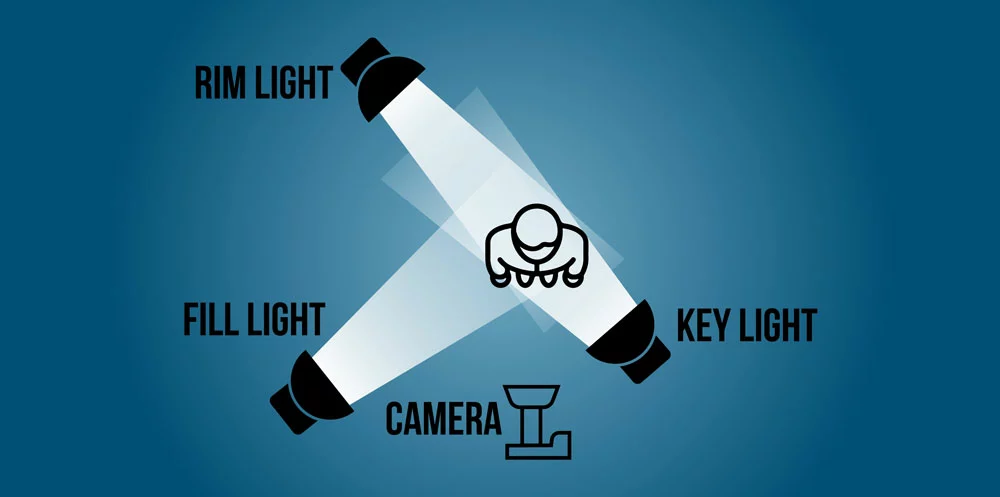
The three-point lighting system
- Key Light: As the primary light in the combination, this unit provides about 75% of the light hitting your face. You can angle it 30-45 degrees to you to avoid direct lighting.
- Fill Light: This unit is dimmer than the key light, and its purpose is to light up the dark areas to highlight additional details. Position it at the same angle as the key light but on the opposite side of the camera.
- Back Light: Also known as a rim or hair light, a backlight defines your image’s outline to make you look three-dimensional. The unit should be behind you and out of the frame.
Factors To Consider in Lighting for Zoom Meetings
Consider the following factors when selecting lighting units.
Diffusion
Aim to use diffused light, not direct, concentrated, harsh lighting. If you can’t afford fancy lights with diffusers, try to use lampshades.
Or turn the bulb to face the wall to use the light that bounces off the wall.
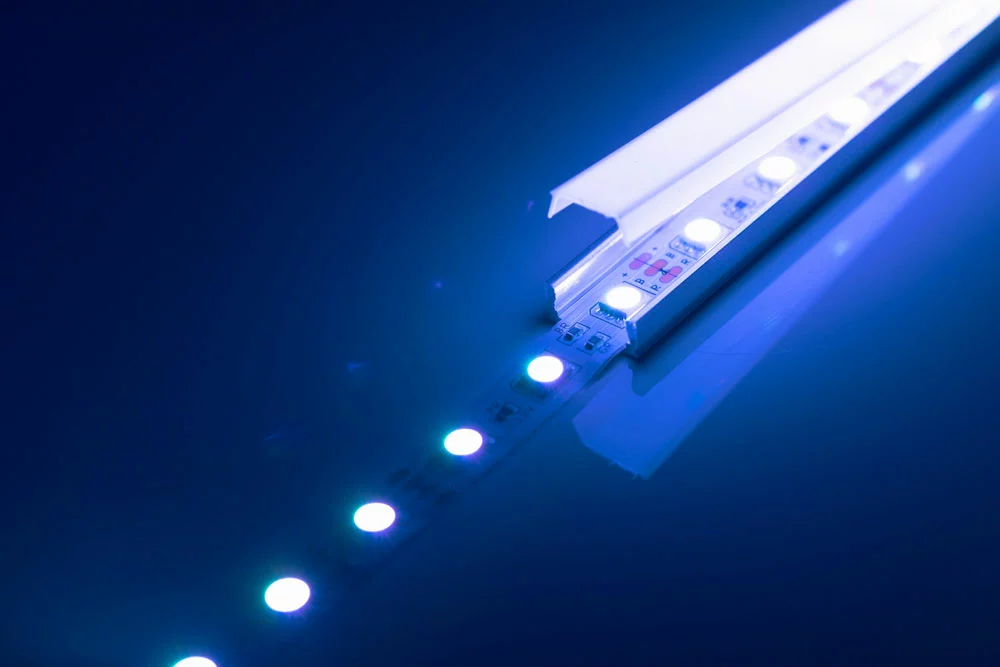
An LED strip light with vs. without a diffuser
Brightness
Since LEDs, CFLs, halogen, and incandescent bulbs have different brightness levels for the same wattage, you should consider the lumen output when picking a light source.
And the higher the lumen rating, the brighter the bulb.
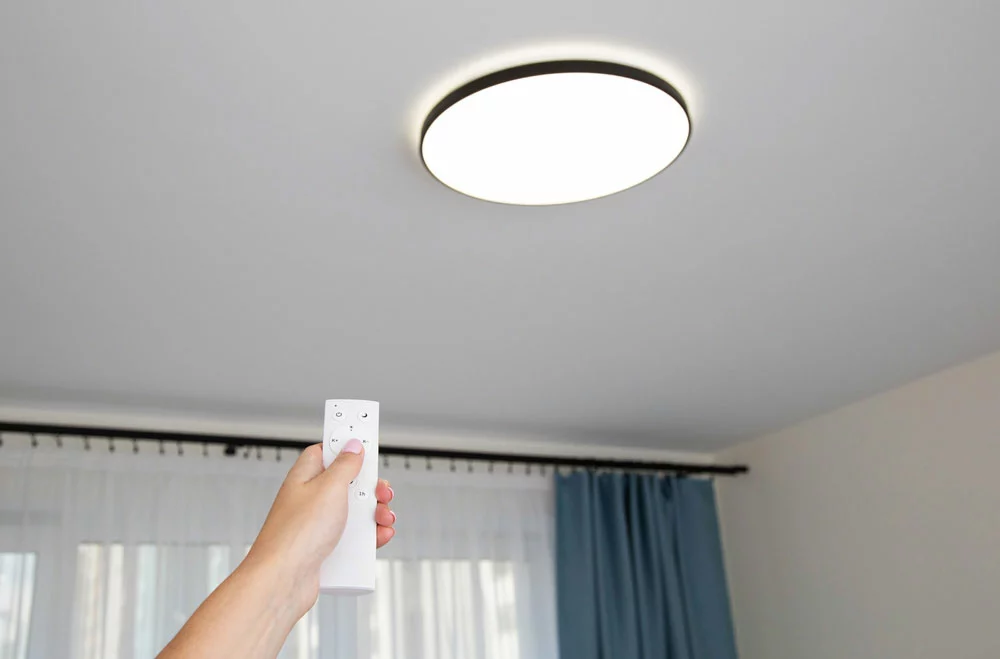
An overhead lamp with a remote control for brightness adjustment
Picking the right brightness level is tricky because some workspaces need more light than others. Therefore, you should consider using dimmable lights because they offer adjustable brightness.
These units can also come in handy when it is cloudy or raining outside.
You can adjust the brightness to complement the natural lighting from the windows.

A ring light and mobile phone set up for vlogging or video calling
Ring lights are ideal for video conferencing because most provide 1% increments from 0-100% instead of steps like 10%. The marketing term for this feature is usually step-less adjustment.
Color Temperature
White light has several tints categorized in a color temperature range. This range shows how warm or cool white light sources are in Kelvin units.
The light appears more orange or red in lower color temperatures and bluish on the higher end of the scale.
If you want to mix natural and artificial light for your Zoom video lighting, ensure you get units with a color temperature of about 5800-6000K.
This range closely resembles natural light from the sun. Mixing color temperatures can make you appear too blue or orange, which will look unnatural in the video meeting.

A smart bulb with adjustable brightness and color temperature via a smartphone
Alternatively, you can purchase lights with adjustable color temperatures for maximum flexibility.
With these bulbs, you can adjust the output to match the sunlight at different times of the day.
CRI
CRI (Color Rendering Index) measures the light quality on a scale of 0-100. The closer the CRI is to 100, the more the light reflecting off surfaces and objects will be precise.
And it will reveal the true color of these objects/surfaces.
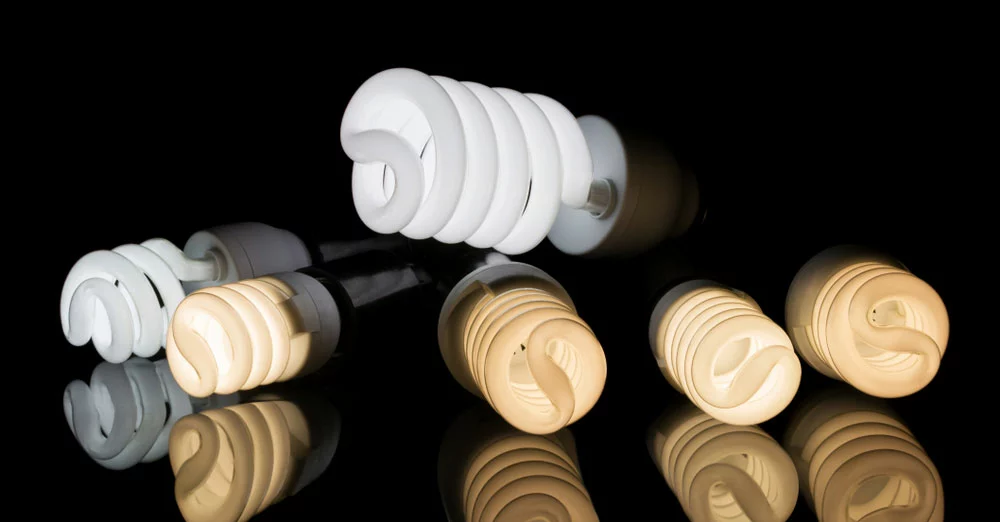
CFL bulbs with different CRIs
Natural lighting from the sun has a CRI of 100, so light sources with high CRIs will closely compare to sunlight to attain full spectrum status.
Size
Considering desktop ring lights, those with large diameters provide better and higher quality light than small ones. For instance, the small 10-inch ring lights can create unprofessional under-chin lighting.
And with the larger diameter ones, there’s also a limit. They can be too bright and create washed-out images for the Zoom calls.
Also, they might not be easily portable.
So the sweet spot is around 12 to 16-inch units.
Adjustable Angle and Height
Since the lighting requires some bending to the perfect angle, the light source should be adjustable height-wise and angle-wise.
People with glasses will appreciate this adjustment more because it will help them avoid reflections and glares.
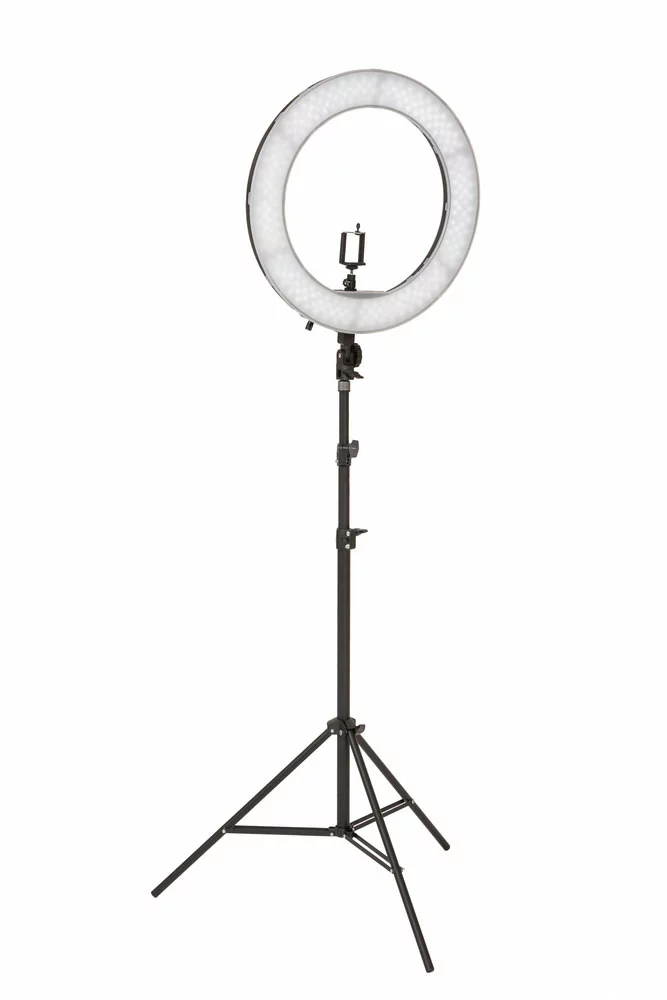
An adjustable ring light tripod
Accessories
A video conference lighting kit should come with extras, such as Bluetooth/WiFi remote control for making adjustments, a phone-mounting feature, and a carrying case.
The more accessories, the better.
The Best Lighting Products for Zoom Meetings
Here are a few LED lighting products to consider when building a lighting rig.
Good Lighting For Zoom: Smart Bulbs
Smart bulbs look like regular bulbs but give you more control over your space lighting.
Most feature Wireless connectivity, such as Bluetooth, for controlling a smartphone app’s brightness and color temperature.
So you won’t have to jump up and down before your Zoom meeting to calibrate the lighting.
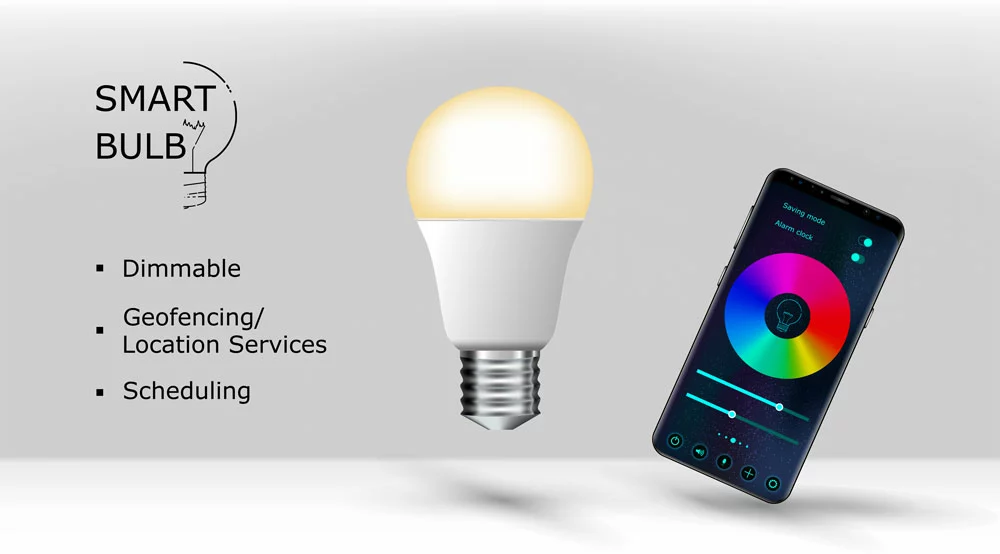
A smart bulb
Good Lighting For Zoom: Desk Lamps
Desk lamps also feature brightness and color temperature adjustment settings.
But ensure you get those with an adjustable arm to tweak the light direction without moving the entire lamp.

A man video calling with a desk lamp providing light while out of the frame
Good Lighting For Zoom: Ring Lights
Ring lights are popular with vloggers and come in two primary types: those that clip to a computer and those with adjustable tripods.
The tripod type offers more positioning flexibility.
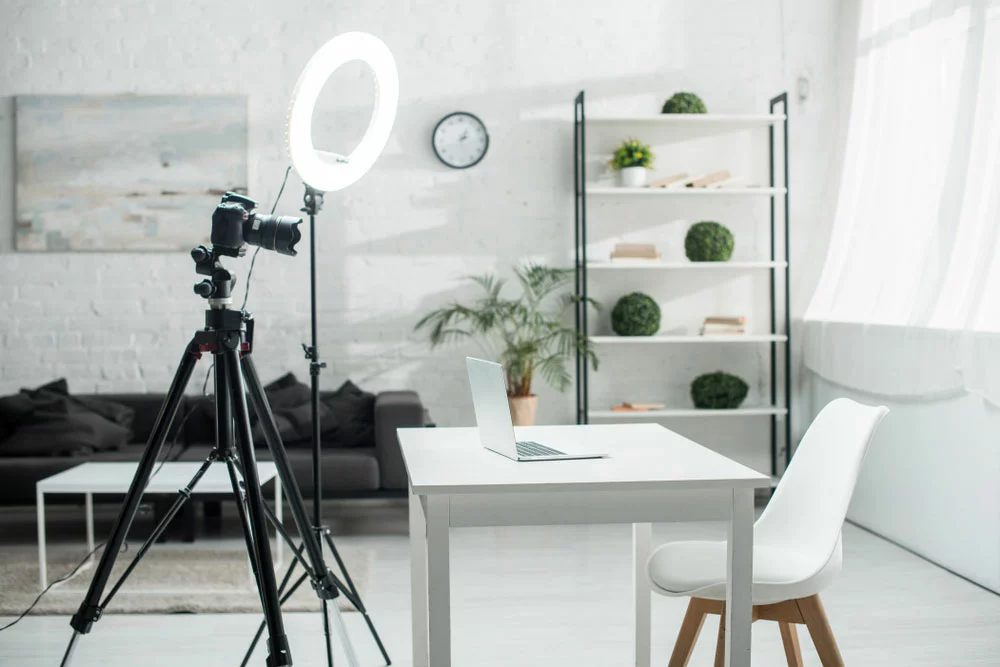
A ring light illuminating a workstation
But ring lights usually reflect in your eyes or glasses, which can be distracting. So you should move them further away from your face and angle them to distribute the light.
Good Lighting For Zoom: Panel Lights
These light sources can replace desk lamps or work together with them because they provide light from above.
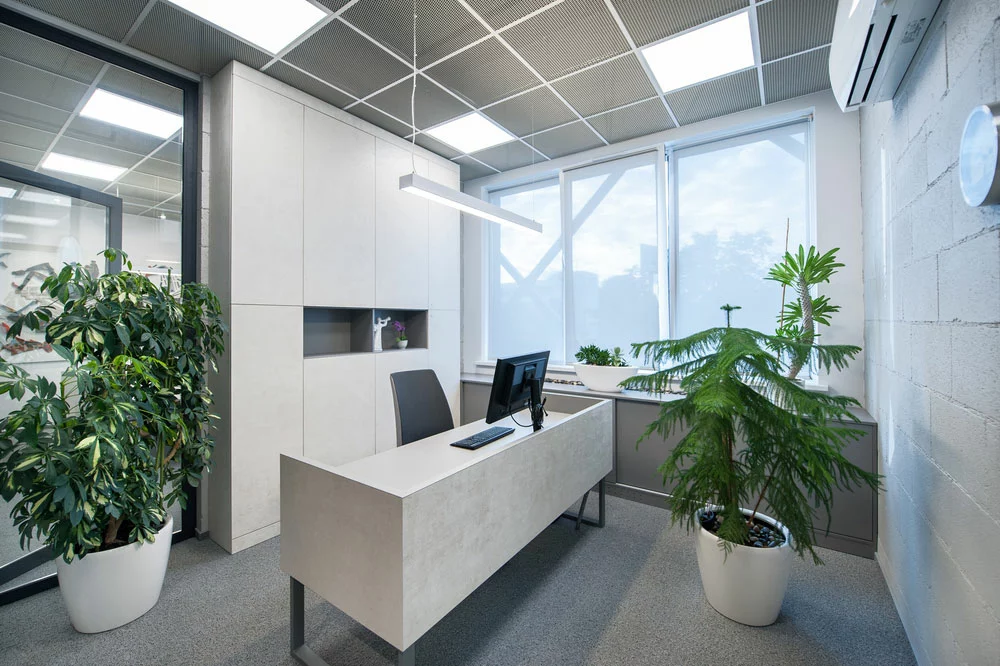
An office with panel lights in the ceiling
If buying this light, ensure it is:
- Adjustable (color temperature and brightness)
- Has wireless connectivity for remote control
- Features an adjustable stand
Good Lighting For Zoom: Full Lighting Kit
If you are serious about the lighting situation, you should get a complete lighting kit with a two-point or three-point lighting setup.
Wrap Up
In conclusion, you have to consider several variables for Zoom video lighting, and the LED lights described above can meet those needs.
That is all for this article. Contact us with your information and drop a message stating what you want us to do.
